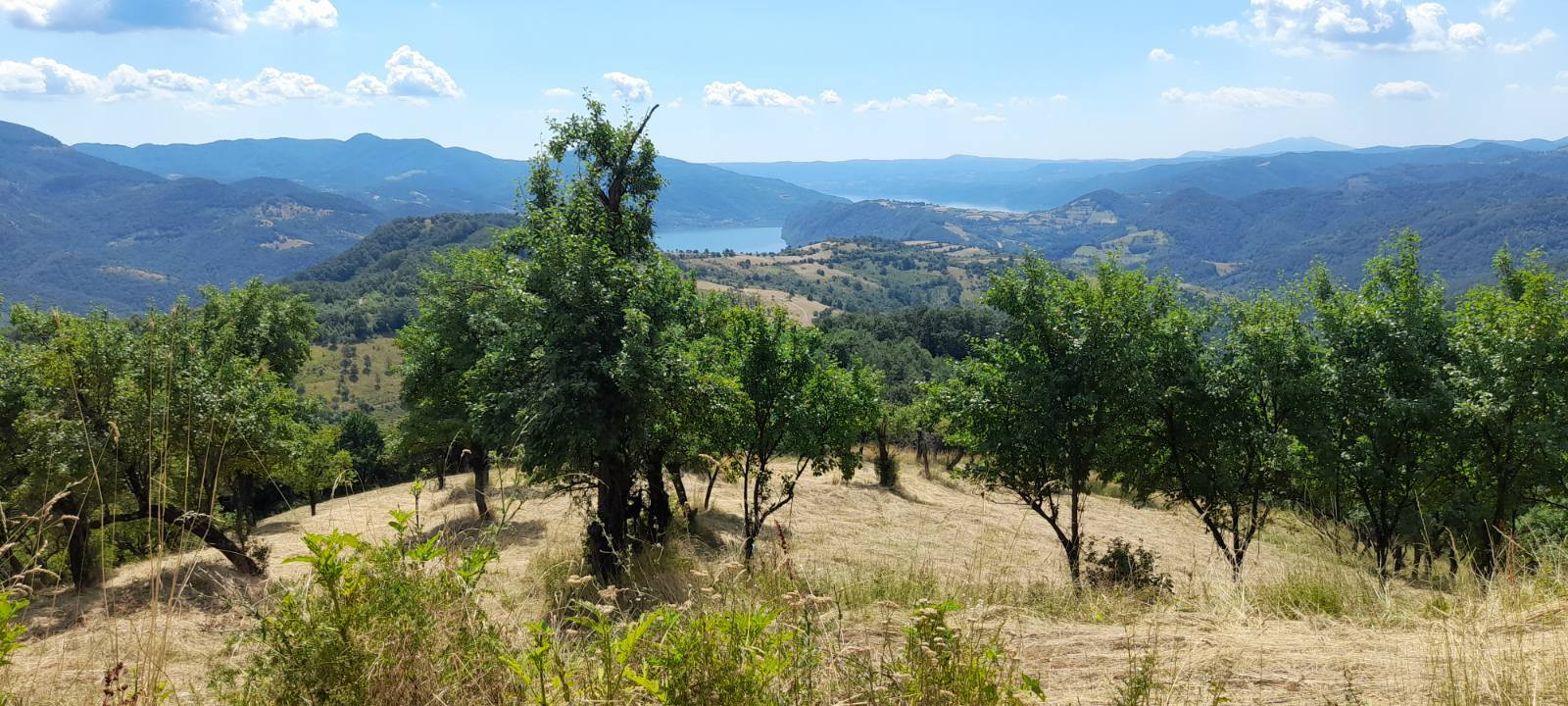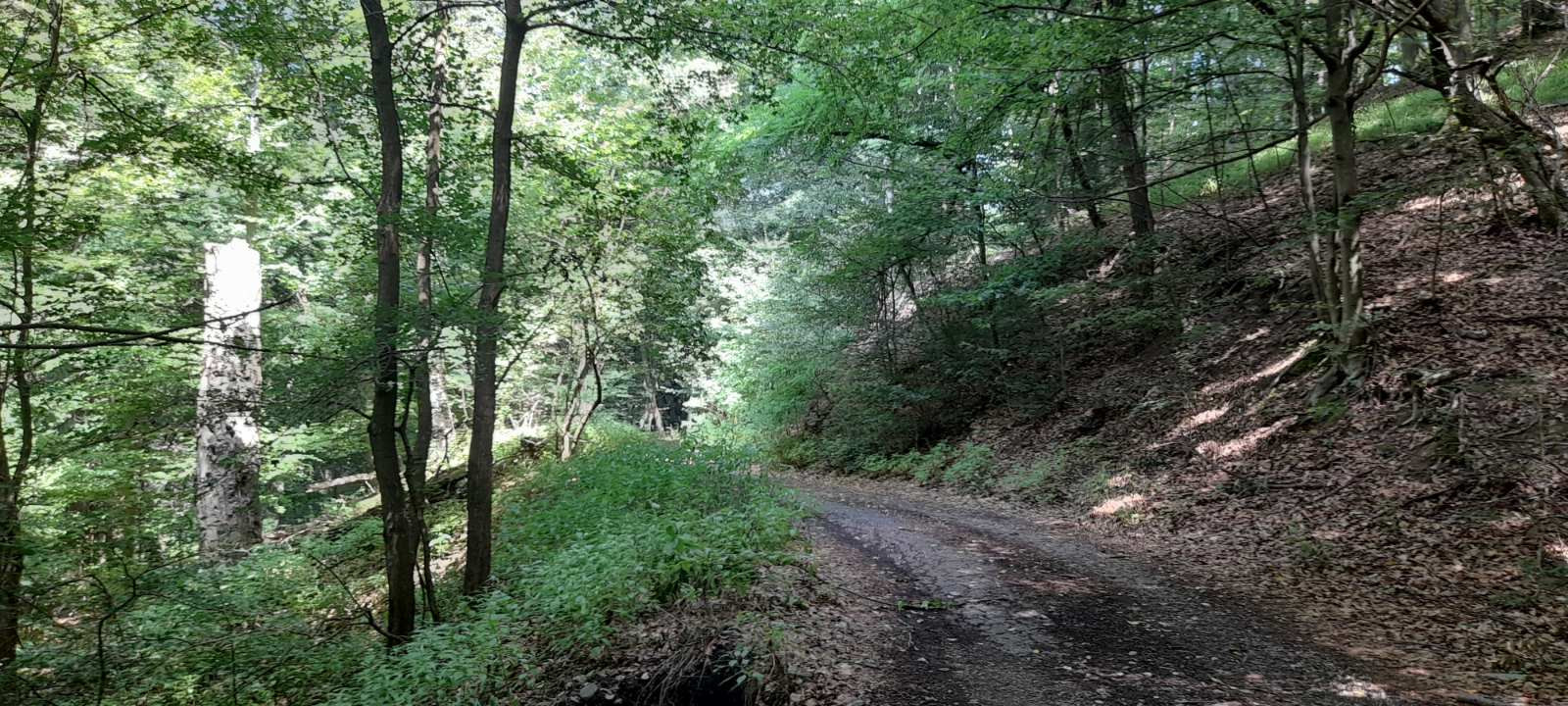Descrizione
This is a 19 km long section of till 1980s the main regional route. Nowadays mostly abandoned, the Forgotten Road connects the villages Boljetin and Dobra, at first (coming from Boljetin) passing through meadows interspersed with oak groves and orchards, and further north, through dark and old beech forests. My usual way of visiting this site is to start the morning at Boljetinska River Canyon (by the Boljetin Village) and then to return driving upriver.
The turn off from the main road is marked for Boljetin (44.540039°N, 22.030813°E), and it comes soon after one of the tunnels – be sure not to overshoot it. After the Boljetin turn off, the road goes down until you reach a small bridge (marked with the international Danube cycling route sign for Golubac). You can park by the side and check the Boljetinska River Canyon for the Merlo acquaiolo that breeds there and with some luck, you may even encounter a Zigolo muciatto, or a Rondine montana among the multitude of Balestruccio s.
From there, follow the international Danube cycling route sign, cross the bridge and continue uphill. This is a productive area of mostly open habitats, where easy species here are Frosone, Pigliamosche, Averla piccola, Tottavilla, Rigogolo, Tortora selvatica. Somewhat harder but realistic finds may include Ortolano, Rondine rossiccia and Cincia dalmatina.
After 8 kilometres, you will reach the pass and, at 500 m a.s.l, the highest section of the Forgotten Road where there is a Y junction, left for the Somrda Reserve (dirt track), right for the Dobra Village (and, farther, Golubac Town) – keep right down the northern slope and into the forest for the next 11 kilometres.
The higher beech forest is where I found the best woodpeckers, such as Picchio dorsobianco, Picchio nero and Picchio cenerino. Picchio rosso mezzano and Picchio rosso minore were mostly in lower, oak sections. Beside woodpeckers, look out for Rampichino comune, Luì verde, Balia dal collare, Cincia bigia and Colombella.
Finally, you reach the Danube riverbank and the good tarmac of the main road. Donji Milanovac, where the park HQ is situated, is at your right, while Dobra, Golubac, as well as Belgrade (about 155 km) are at your left.
Dettagli
Accesso
By car only. Park wherever you like, explore by walking, or further driving. For driving directions, zoom in on the map and click on the "P" (parking) sign.
In some sections (closer to the village of Boljetin), the Forgotten Road tarmac is heavily broken by hefty lorries full of beech tree trunks (however illegitimate, mostly legally logged within the park), while in the northern, forested section, it is potholed, but not too bad.
Terreno e habitat
Foresta , Montagna , Alberi e cespugli sparsi , Prateria/pascolo , AltopianoCaratteristiche dell’area
Collinoso , RocciosoPercorso ad anello
NoÈ utile un cannocchiale?
Può essere utileBuona stagione per il BW
Primavera , EstateMiglior periodo per visitare
Migrazione primaverile , Primavera , Estate , Migrazione autunnalePercorso
Strada asfaltataGrado di difficoltà del percorso a piedi
FaticosoModalità di accesso
MacchinaCapanno/torretta di osservazione
NoInformazioni aggiuntive
The riverside town of Golubac (130 km or two hours’ drive from Belgrade) is the entrance point to the area. Almost every village between Golubac and the next town of Donji Milanovac (a further 60 km) offers rooms to let, but petrol stations are to be found only in the towns.
In the village of Dobra (by the upstream end of the tour) there is a guest house Artemida (400 m from the Danube) and the family pension Cvetković (on the bank of the Danube), and 6 km west of Dobra, on the bank of the Čezava river Camp Asin is located, so you can spend the night right there and go birding the next day at the crack of dawn.
The asterisk marks the Lepenski Vir Museum of an important Mesolithic archaeological site housing a large village with unique stone head-sculptures created 8000 years ago.
Link
- Guide to birding the Forgotten Road in the Djerdap National Park
- eBird Boljetinska River Canyon
- eBird the southern section
- eBird the northern section
- Djerdap National Park authorities
- Free map app (iOS and Android)





